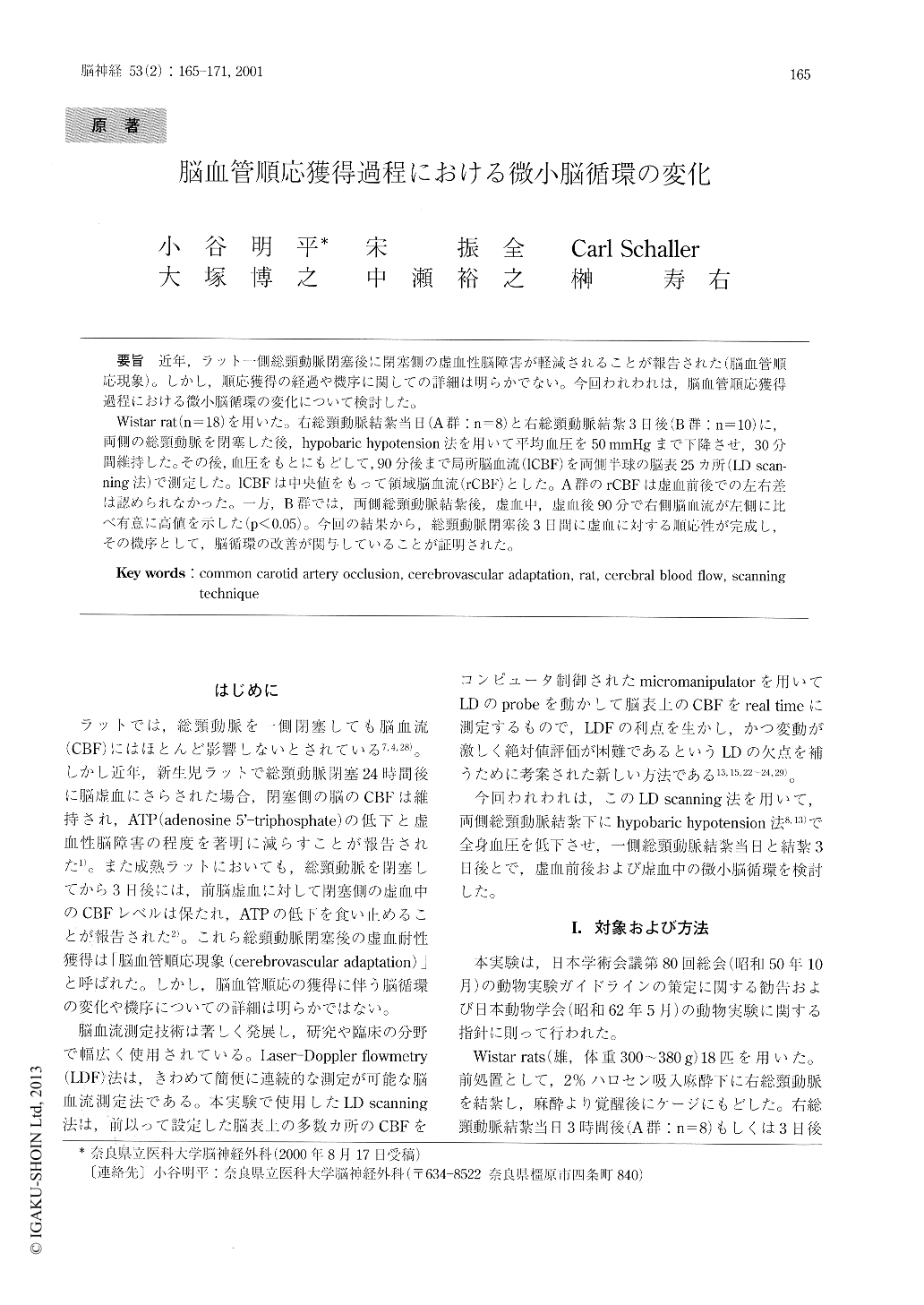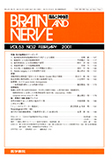Japanese
English
- 有料閲覧
- Abstract 文献概要
- 1ページ目 Look Inside
近年,ラット一側総頸動脈閉塞後に閉塞側の虚血性脳障害が軽減されることが報告された(脳血管順応現象)。しかし,順応獲得の経過や機序に関しての詳細は明らかでない。今回われわれは,脳血管順応獲得過程における微小脳循環の変化について検討した。
Wistar rat(n=18)を用いた。右総頸動脈結紮当日(A群:n=8)と右総頸動脈結紮3日後(B群:n=10)に,両側の総頸動脈を閉塞した後,hypobaric hypotension法を用いて平均血圧を50 mmHgまで下降させ,30分間維持した。その後,血圧をもとにもどして,90分後まで局所脳血流(ICBF)を両側半球の脳表25カ所(LD scan-ning法)で測定した。lCBFは中央値をもって領域脳血流(rCBF)とした。A群のrCBFは虚血前後での左右差は認められなかった。一方,B群では,両側総頸動脈結紮後,虚血中,虚血後90分で右側脳血流が左側に比べ有意に高値を示した(p<0.05)。今回の結果から,総頸動脈閉塞後3日間に虚血に対する順応性が完成し,その機序として,脳循環の改善が関与していることが証明された。
Recently, long-term cerebrovascular adaptations af-ter unilateral carotid ligation that increase the toler-ance of the brain to subsequent episode of ischemia was reported (J Cereb Blood Flow Metab, 1998). How-ever, the pathophysiological mechanisms underlying the phenomenon was unknown . We examined re-gional cerebral blood flow (rCBF) before, during and after subsequent ischemia in the development of the adaptation. Male Wistar rats (n=18) were used. Uni-lateral (right) carotid artery ligation was performed 3 hours (group A: n=8), 3 days (group B : n=10) be-fore forebrain ischemia.

Copyright © 2001, Igaku-Shoin Ltd. All rights reserved.


